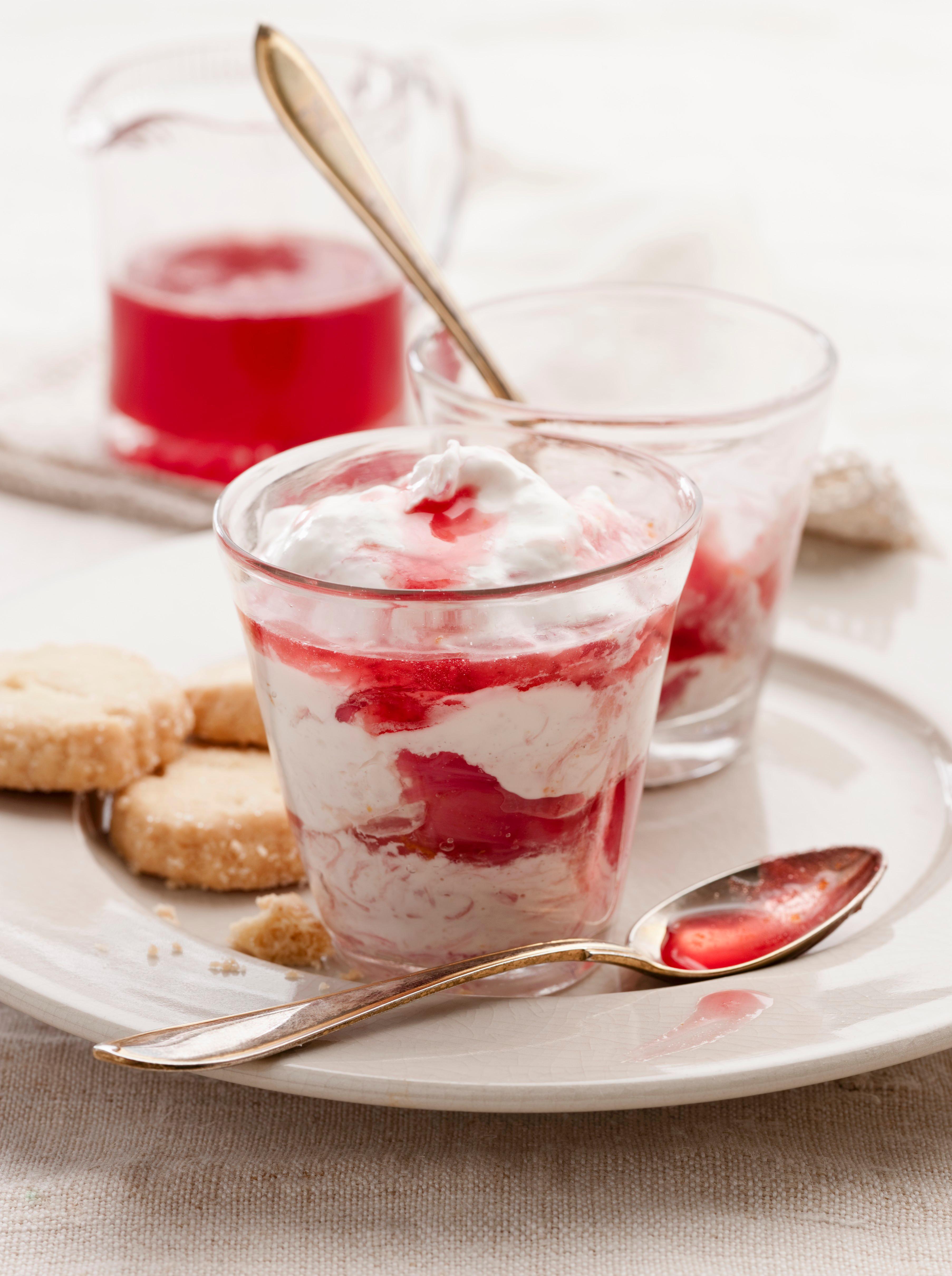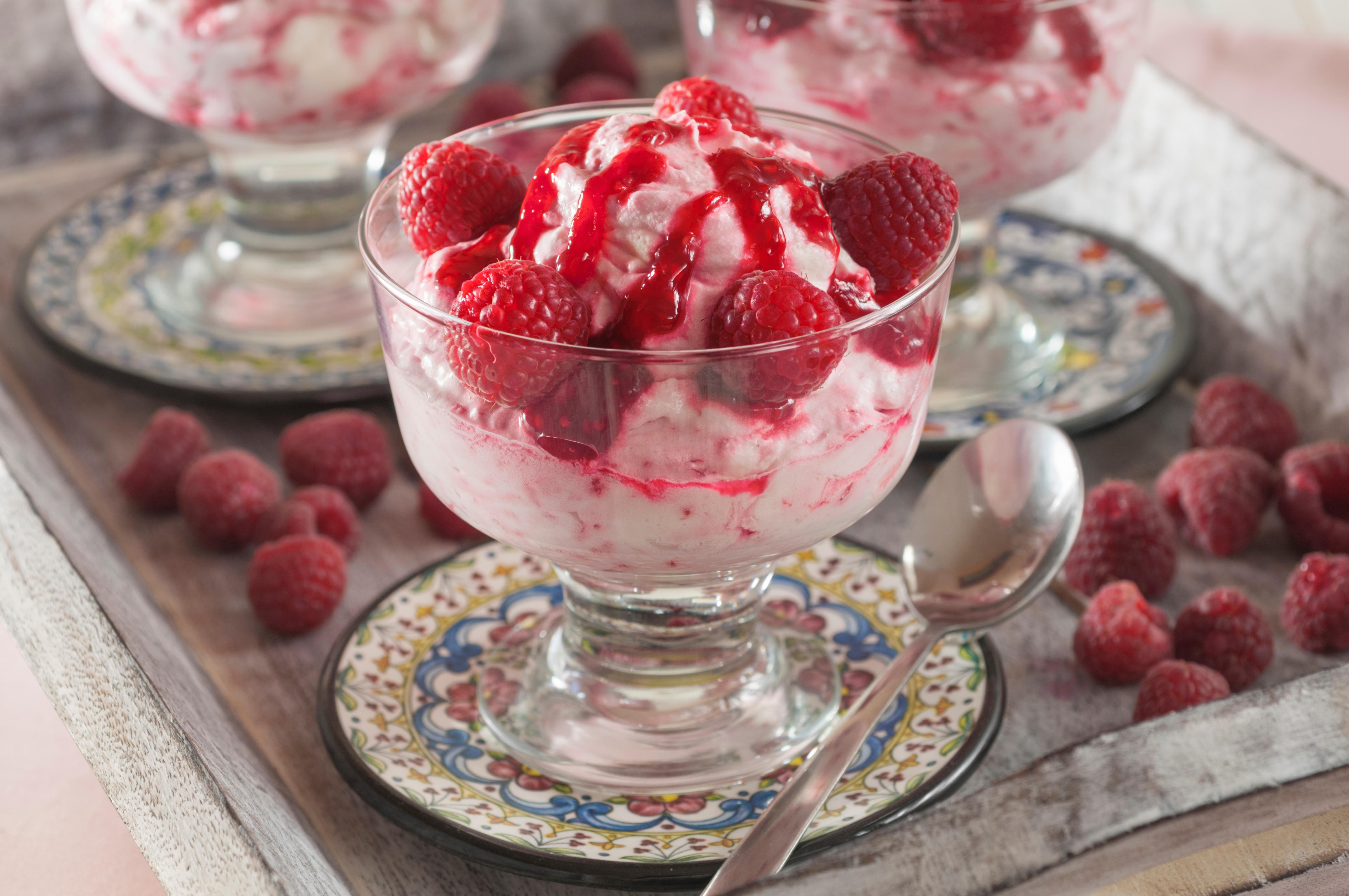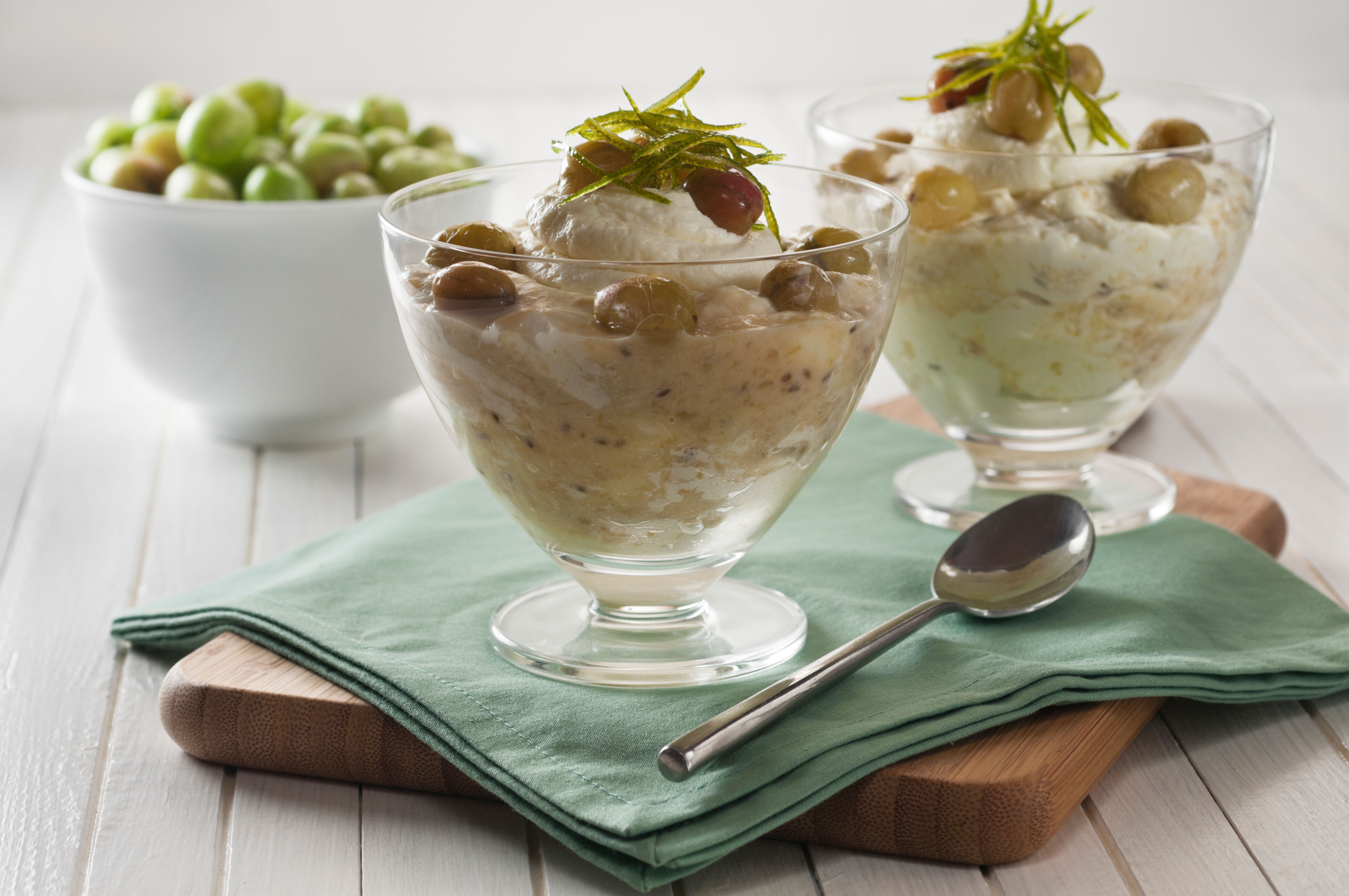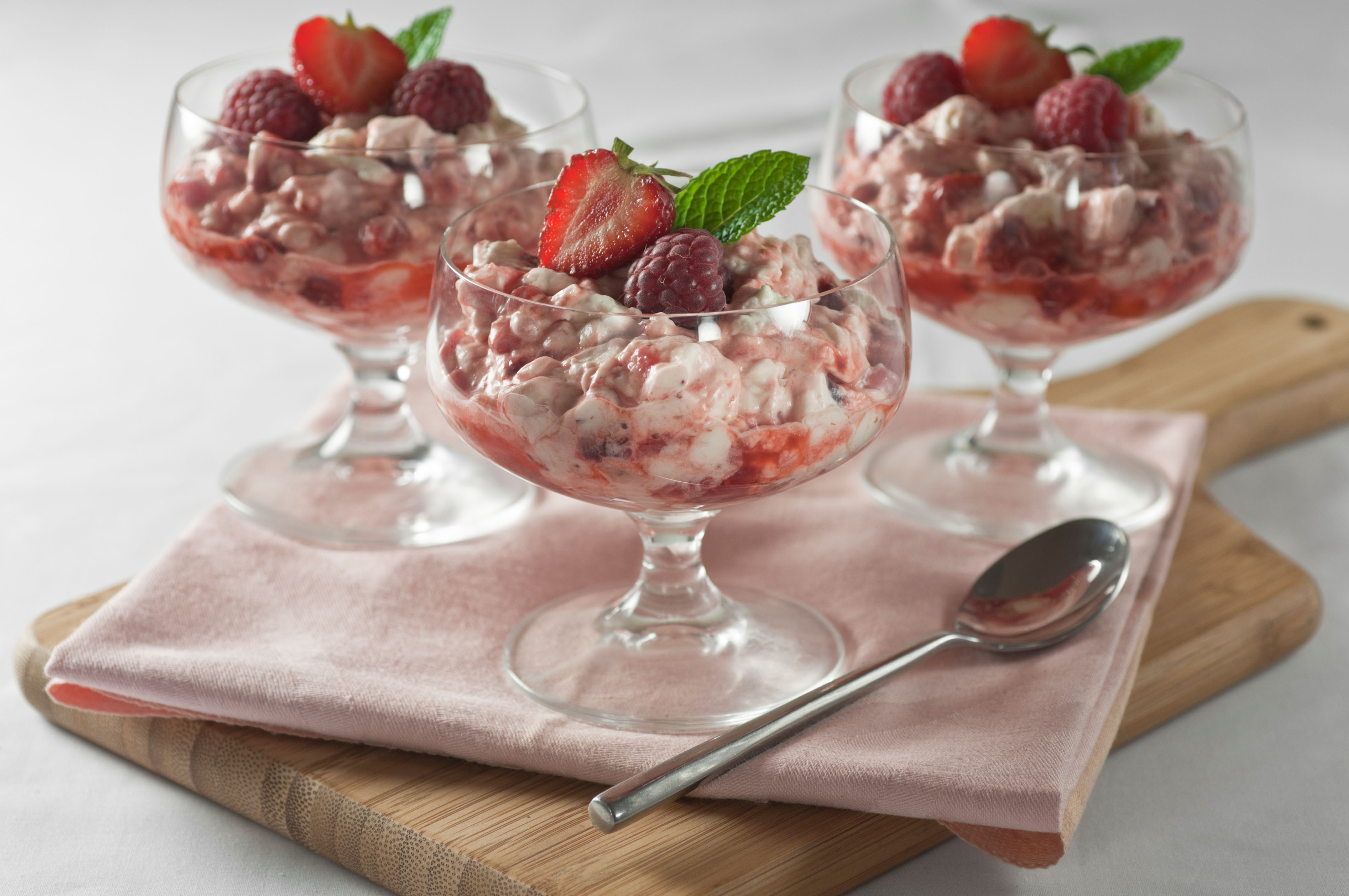The joy of the fruit fool, where school dinners meet sophistication — and an unbeatable recipe for raspberry fool
One of the greatest British desserts, the fruit fool, is also one of the simplest: just mix fresh cream and sugar with whatever fruit is fresh from the garden. Flora Watkins explains more.


Fool, glorious fool. Its name evokes childhood memories of golden afternoons, endless summers and gluts of berries. Like its name, the pudding is simple, almost childlike. However, when the sun is shining and soft fruit is abundantly in season, gooseberries, rhubarb and raspberries ask for nothing more than fresh cream and a little sugar.
‘Soft, pale, creamy, untroubled, the English fruit fool is the most frail and insubstantial of English summer dishes’ was Elizabeth David’s perfect description in An Omelette and a Glass of Wine. Fruit fool is adored by children and older people alike, ‘the kind of thing that women are said to favour, but that men eat more of,’ as Jane Grigson put it in her Fruit Book (1982).
Its charm lies in its simplicity. Recipes in old cookery books describe fools made from all manner of fruits, including apple, fig and mulberry, yet fools and creams — the recipes are often interchangeable — could include eggs and were flavoured with wine, spices and lemon peel.
In The Art of Cookery Made Plain and Easy (1747), Hannah Glasse gives a recipe for gooseberry fool with eggs and nutmeg and her orange fool contains half a dozen eggs, plus cinnamon and nutmeg to taste.
Gradually, the traditional English fruit fool came to be accepted as a pureé of fruit, thick cream and sugar, a combination that ‘should not be tampered with’, according to Simon Hopkinson in his award-winning Roast Chicken and Other Stories.
However, in culinary bible The Constance Spry Cookery Book (1956), the author — writing when rationing and wartime privation still loomed large in the collective psyche — noted that ‘a thick custard’ may be added to the fruit and cream, ‘for reasons of economy’.

Lindsey Bareham, who wrote the much-loved Dinner Tonight column in The Times for many years, also likes to add a little leftover custard, if she has any, to rhubarb and gooseberry fools. ‘You get an element of school dinners, but in a much more sophisticated way,’ she divulges.
Sign up for the Country Life Newsletter
Exquisite houses, the beauty of Nature, and how to get the most from your life, straight to your inbox.
Like many food writers and chefs, she favours gooseberry. ‘Fools, to my mind, work best with fruits that are sour — gooseberry, currants, rhubarb — because the tension between the sour fruit and the sweet cream is the essence of it.’ She serves her fools in ‘pretty, sundae-type glasses’ or ‘those squat, low tumblers you get in tapas bars’, but never ‘lumped’ all together in a big bowl.
For a long time, it was thought the word fool came from the French word fouler, to crush. However, as Grigson explained, it’s a word that goes with trifle and whim-wham (trifle without the custard) — ‘names of nonsensical bits of folly, jeux d’esprit, outside the serious range of the cookery repertoire’.
That’s a shame, as a late-summer fool of blackberries and a little vanilla sugar makes a sophisticated dinner-party pudding, as do Alphonso mangoes (I’ve never made the latter without someone asking me for the recipe).
Fools rarely appear on restaurant menus, but Jeremy Lee — that great exponent of classical British food, who adores ‘all things cream and trifle’ — had gooseberry fool on the specials menu at Quo Vadis this year.

‘People don’t tend to go for it in a restaurant,’ he believes. ‘If they see profiteroles on the menu, then the poor gooseberry fool can’t compete. People who do choose it say “Oh gosh, my Mum used to make that for me”.’
Mr Lee also puts fool on trifles and syllabubs. ‘It’s absolutely scrumptious, the essence of a good lunch.’
When gooseberries come to the end of their all-too-short season, raspberry flavoured with rosewater is a delicious alternative. It comes from Grigson, who, in turn, took the idea of flavouring raspberry fools with rose from Hannah Woolley’s Accomplish’d Lady’s Delight of 1675.
There are recipes for winter fools, made with prunes, dried apricots or frozen fruit, to which a slug of kirsch or sloe gin is added. The fact remains, however, that this is a pudding best enjoyed on one of those aforementioned golden afternoons, in celebration of our often-fleeting English summers. Make it out of season, and more fool you.
Recipe: Raspberry and rosewater fool
Ingredients
(Serves 6–8)
500g raspberries
2tbsp icing sugar
600ml double cream
1tbsp Rosewater
Method
Take four tablespoons of the raspberries, crush them, and push through them a sieve.
Add the icing sugar to the purée and lightly sugar the rest of the raspberries.
Whip the double cream until floppy. Swirl the purée through the cream and add the rosewater (you can use more than 1tbsp, if desired) and fold in the whole raspberries.
Serve cool, rather than chilled, in individual glasses.

The true story of Eton Mess – and how to make the perfect one
The question, it turns out, isn't 'why' it's called Eton Mess, but whether it's actually called 'Eton Mess' at all...
-
 Jungle temples, pet snakes and the most expensive car in the world: Country Life Quiz of the Day, April 14, 2025
Jungle temples, pet snakes and the most expensive car in the world: Country Life Quiz of the Day, April 14, 2025Mondays's quiz tests your knowledge on English kings, astronomy and fashion.
By James Fisher
-
 Welcome to the modern party barn, where disco balls are 'non-negotiable'
Welcome to the modern party barn, where disco balls are 'non-negotiable'A party barn is the ultimate good-time utopia, devoid of the toil of a home gym or the practicalities of a home office. Modern efforts are a world away from the draughty, hay-bales-and-a-hi-fi set-up of yesteryear.
By Annabel Dixon